
|
| Accept Cookies | Customize | Refuse Cookies |
Nicolò Cavallaro www.juzaphoto.com/p/NicoloCavallaro  |
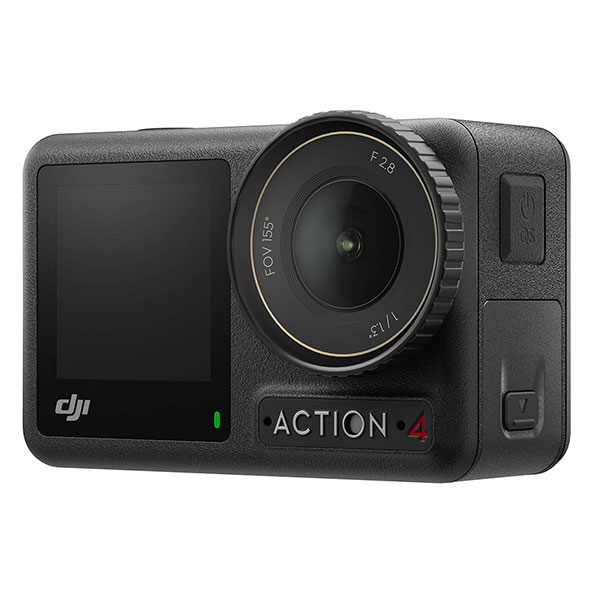 | DJI Osmo Action 4 Pros: There are a lot, especially when compared to the direct competitor, i.e. the GoPro: battery charging time; more constant battery consumption; front touchscreen display from which it is possible to manage every function of the Action 4; magnetic attachment; better structured menu, therefore more intuitive and with more beautiful graphics; excellent built-in microphones that allow you to understand speech even in windy conditions; USB-C port that allows you to also attach microphones with this connection without forcing you to buy expensive accessories; much more that I will explain further down. Cons: At the moment none. Opinion: sent on February 15, 2024 |
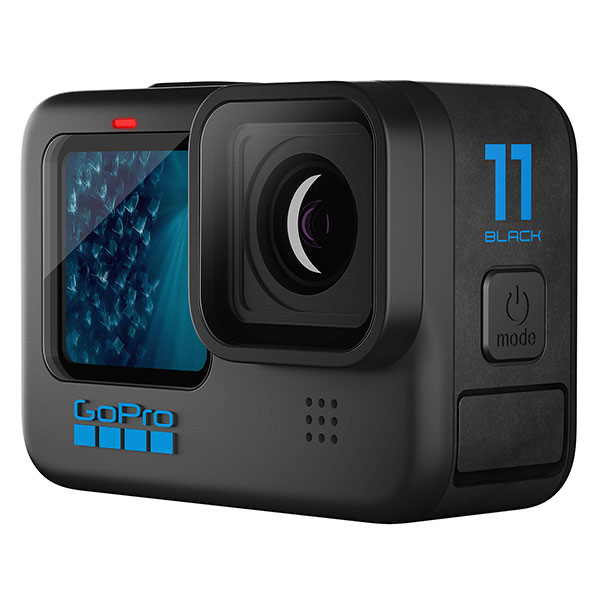 | GoPro Hero11 Black Pros: Beautiful materials. Video/audio (and also photos) of excellent quality in good light conditions, incredible if you consider the size of the sensor. Dual display, essential for v-log and in certain situations. Video in 10bit (for those who will do post production). Reliable in use, I never got stuck to it. Cons: I don't know if it depends on the protection I applied on the rear screen, but in conditions of intense cold I notice a lower responsiveness and precision of the touch. Battery consumption, but it could not be otherwise given the performance. The front display is not touch, it would have been more comfortable. Not very light, it is small (not like its progenitors from 8 down), but it looks like a brick. Price, but here I also want to add a nice DEPENDS considering the movies that churns out. Opinion: sent on December 07, 2022 |
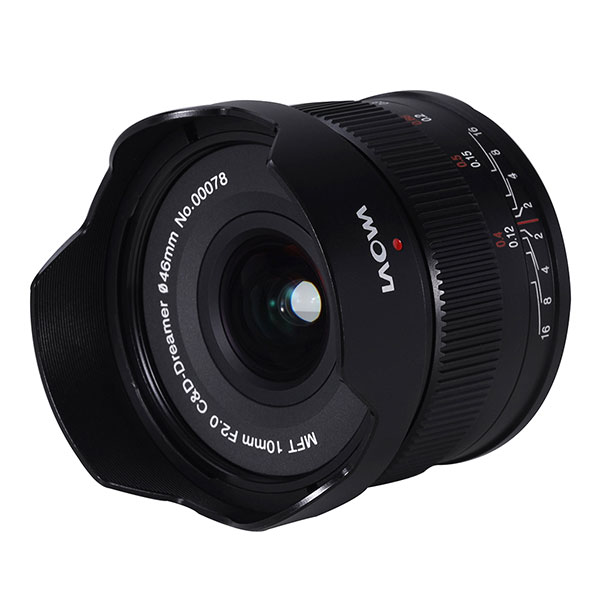 | Venus Laowa 10mm f/2 MFT Pros: Small and very light - Well assembled (the hood is also made of metal) - Excellent image quality on the whole frame already at f/2 - Very sharp - Low distortion - Well controlled side AC - Minimum focusing distance (12 cm) - Soft and pleasant Bokeh - Pleasant star effect - Electrical contacts and integrated chip Cons: Resistance to flares - A bit of vignetting at f/2 - Noisy diaphragm - Front cap that needs claws to handle it - Not tropicalized - The price if you do not find it discounted Opinion: In the wake of the 7.5mm f/2 (which I owned) Laowa proposes this interesting 10mm. I have used it still little, but I want to share the first impressions of use. An ultra wide-angle focal length, but less exasperated and that I personally consider overall more versatile than the 7.5mm. The presence of electrical contacts allows you to set the aperture directly with the camera rings and above all to automatically recognize the lens to the camera body so it will be enough just to operate the only ring present in the 10mm to start monitoring the magnification of the selected area for a more precise manual focus, to the advantage of speed and immediacy. The stabilization will also be calibrated automatically thanks to this continuous lens/camera communication. It is characterized by an excellent sharpness in the center and in any case very good also at the edges and extreme angles already at f / 2. Closing at f/2.8 improves a bit the sharpness in the most peripheral area of the photo until it reaches the maximum at f/4. The native vignetting (i.e. the visible one with the lens profile deactivated) is really very pronounced, but the 'real' one is perfectly within normal, a bit evident at f/2, almost completely absent if it closes at f/4. I think this is normal because the small diameter of the lens has been adopted to maintain its size and compactness at these levels. The wording "Zero Distortion" of which it boasts I think is more than deserved, in fact only a very slight barrel distortion is visible, we are talking about 0.3% so practically irrelevant. The resistance to flares is not exceptional, I speak clearly of Sun shot in the face as I generally like to shoot and therefore situations that put in crisis a bit 'all the objectives, some more or less. In more traditional shooting situations, however, always pay attention to where the Sun is positioned, even on the side in the frame it can generate reflections on the opposite angle. CCs (chromatic aberrations) would seem well controlled. The so-called star effect I find very nice and in landscaping can help make the photos more appealing, not only with the Sun but also with artificial light points (street lamps, lighthouses, etc.). The minimum focusing distance of 12 centimeters allows for particular shots and even the Bokeh I find it pleasant despite the fact that we are talking about a wide angle. It is not tropicalized, but frankly I do not think it is a very big problem; you will be a little more careful if it rains... in essence the same that you put on your equipment regardless of the resistance or not to atmospheric agents. The cap, as with the 7.5mm, is nerve-wracking simply because the two grooves are too shallow to grab it so, unless you have feline claws, when you pull it out with your index and thumb you will probably see it splash away as if it were equipped with autonomous propulsion; I understand that they did it thinking about aesthetics, but practicality comes first. The full price I find high, but if you can find it discounted then the music changes. Ultimately, as far as I could understand so far, a bright and razor-sharp ultra wide angle that enriches the wide range of quality lenses for the Micro 4/3 system that proves to be far from having exhaled the last breath. sent on December 21, 2021 |
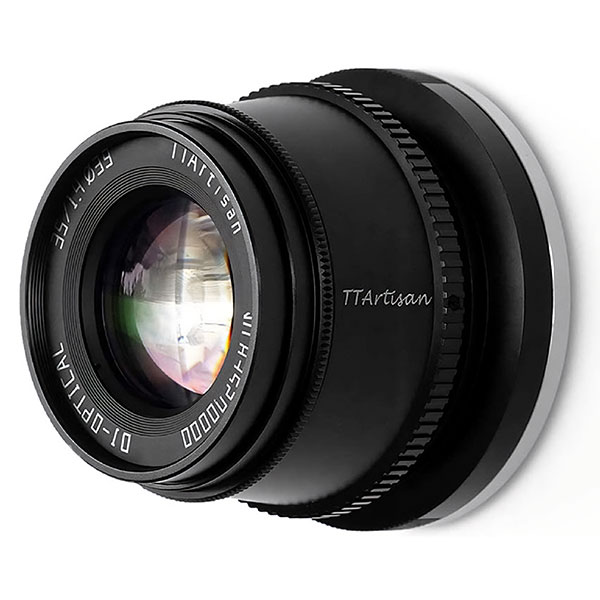 | TTArtisan APS-C 35mm f/1.4 Pros: Small and beautiful aesthetically. Excellent assembly. Diaphragms ring with shots. Optical quality in relation to the price. Cons: Non-stellar flares resistance. Lack of hood. Maybe the front cap screwing. Opinion: It costs 89 euros new and on Micro 4/3 has an angle of view equivalent to a 70mm, so I personally find it very versatile, both for portraiture and for other photographic genres. The optical scheme was probably taken from old lenses of the past, it resembles the Pentax Super-Takumar 50mm f/1.4 and this is not a bad thing, indeed. Mechanically it is a pleasure to rotate both the focus ring and the diaphragm ring with its pasty clicks. Even aesthetically it makes its figure, hardly those who see it think of a Chinese goal. At f/1.4, if you are precise in focusing and respecting the right working distances, it can be sharp in the center... not to make the eyes bleed, but with more than dignified results. Even the contrast I find good already at full opening. Closing slightly sharpness increases quickly. At f/2 it is already great, at f/2.8 excellent. I would say that for portraiture you can safely take advantage of the range from f / 1.4 to f / 2.8, I would use f / 5.6 only for landscape and architecture. Speaking of blurred I don't mind at all, I find it very classic/analog. More than the quality of the Bokeh I would dwell on the ability to detach a subject from the context and the TTArtisan 35mm in this sense manages to show its personality, what I was looking for in such a lens. Probably several factors contribute including the lack of low dispersion elements or aspherical lenses that if on the one hand does not allow a record incisiveness at full aperture on the other these 'imperfections' give character to the photos. I have not had the opportunity to sincerely test the accuracy of the distance scale imprinted on the barrel, I always use the viewfinder or the camera display to focus accurately. The resistance to flares is not exceptional and this is easily explained by the lack of particular anti-reflective treatments that are found in modern lenses, but still nothing tragic, just pay a little attention and know how to exploit certain reflections can also be decorative. A bit of barrel distortion, I would say more than physiological and also present in lenses that travel on very different prices, however easily correctable in post. Strangely enough, clicking at f/11 is not available; you go from f/8 to f/16, but it makes no sense to close beyond f/5.6-f/8 (both for APS-C and Micro 4/3 users), for diffraction problems and because at f/5.6 the lens reaches its maximum sharpness throughout the frame. The minimum focusing distance is not bad and allows you to take shots of flowers and other fairly small subjects. Ultimately I would recommend it to all those who are not frightened by manual focusing; who want a small, elegant and well-assembled fix that manages to give photos with a retro flavor, but with good sharpness and contrast, all while spending a lot. sent on December 04, 2021 |
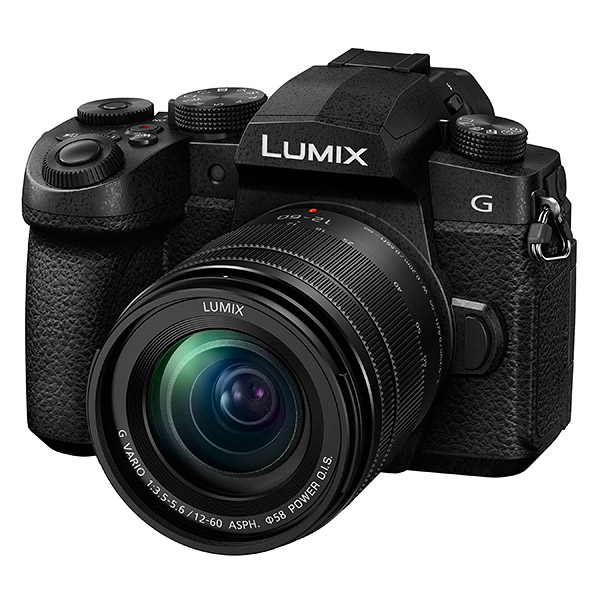 | Panasonic G90 Pros: Eclectic camera, it does everything and does it well. Ideal size, neither too large nor too small. Light, but well built. Excellent ergonomics and arrangement of buttons / controls. Operating speed. Last Menu inherited from G9. Built-in Flash. Cons: Excessive cropping in 4K. DFD with some limitations. 'Old' rear LCD display. Automatic white balance for my taste not perfect, but easily calibrated. Battery discreet, but improvable. Price at launch too high. Opinion: What can I say, I had both the G80 and the G9 and the G90 tries to place itself in the middle scopiazzando the little sister while maintaining weights and above all dimensions of the G80. As always happens in these cases in order not to make excessive competition to the excellent G9 in Panasonic they have deliberately castrated it. Compared to the latter, in fact, the AF has a few less options; sometimes not very precise, but I noticed that it depends a lot on the selected focus mode and also on the lens you use. In AF-S he rarely gets it wrong. Let's say that at the base of this speech there is always the fact that Panasonic insists on using the DFD and to date, despite being overall a good AF system, it is not the best that the market offers. Compared to the G80 they have improved the keys (especially some, the most used ones) that are now not flush with the body and therefore feel more easily to the touch. One refinement I appreciated is the choice of three different keys for WB/ISO/Exposure Compensation... they are in fact one raised and convex, one with two small protuberances, one smooth plate; in this way only by touching them you will understand where you are acting. One/two buttons I would have put them in a different position, but they are personal tastes. A criticism that I would like to make to Panasonic is to continue to use LCD panels now dated ... the EVF still does its homework, it is a fairly large discrete unit that allows you to photograph without any particular problems. The rear panel, equipped with an excellent touchscreen, is instead not very resolute (according to what should be the standards in 2020/2021) and in conditions of strong light that is not easily readable. So poor reproduction of color shades and low brightness in certain environmental conditions. I say, Sony does much worse with the obscene LCD panels that mounts on the A6xxx series and the first A7, unusable under the Sun, but I would have preferred that on this G90 and other models of the G and GH series Panasonic had started to mount more modern panels, perhaps with Amoled technology. An annoying thing for me is the crop in 4K, really excessive, in some circumstances it can be comfortable, but generally I find it more a limit than a value. It is clear that it was wanted not to step on the toes of the G9, but on this model also voted a lot to the video sector they should not have included it in my opinion. And speaking of the video side, the G90 is very complete, even for the evolved customer, even including LOG profile and unlimited duration of recordings. Only a professist who works with videos might prefer a GH5. Another Panasonic feature, more than the G90, concerns the automatic white balance, which has always not been perfect (better Olympus at this juncture), but improved with the latest models; it has a tendency to introduce one too many magenta drizzle for my taste, but it is always calibrable at will. What else to add... it is a multifaceted camera, you can do everything, I took it precisely because of these characteristics. Reliable, always ready, it is the companion who never betrays you. Highly customizable, you can really sew it on you once you have programmed the keys (even virtual, on display) and the rings. The Menu inherited from the G9 is really good and thanks to the MyMenu section you practically avoid having to look for options in the many pages. The sensor is the classic 20 MP that for years has been the standard in the Micro 4/3, for my needs I find it more than enough. I conclude by saying that in my opinion it represents one of the most sensible choices for those who love the Micro 4/3 and need a versatile, practical and reliable camera. Its only real 'defect' concerned the price that brought it dangerously close to the G9, but already today it has settled on values more suitable for its range of belonging and later it will be even more a best-buy. Recommended sent on August 14, 2021 |
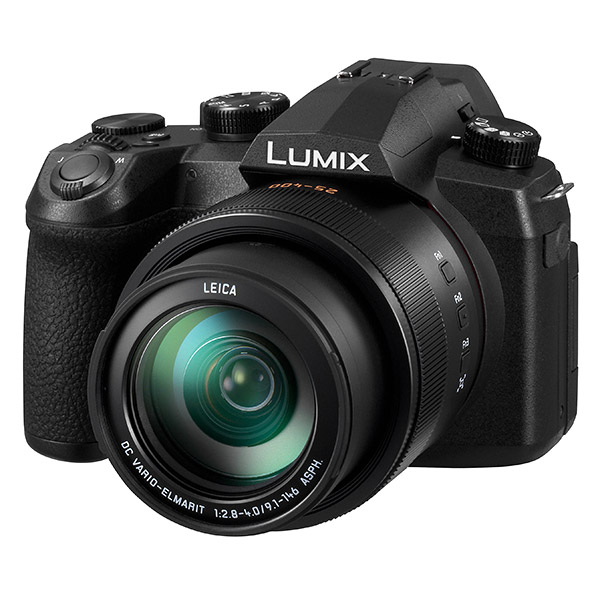 | Panasonic Lumix FZ1000 II Pros: light; very good ergonomics provided by the handle and in general by the buttons that allow you to use it even with one hand (including turn on and off); Great Menu borrowed from the G9; ease of key programming; great articulated touchscreen (here Panasonic in my opinion is in front of everyone); fast and responsive in operation; very customizable depending on your needs; good EVF that above all does not distort on the sides as it happens on the G9; good image quality overall; well-groomed video sector as per Panasonic tradition; versatility of focal points (the main reason why you choose a Bridge); being a 'compact' inherits the central shutter that I definitely consider a pro because it allows you to shoot in High-sync even with flashes that do not have it; closed diaphragm produces a nice star effect that strangely you wouldn't expect from a Brdige and even the Bokeh is not bad at all when you consider the type of machine; good resistance to flares. Cons: chromatic aberrations; rendered optical to the wide-angle focal at the extreme edges of the frame; decentralized tripod attachment thread that forces you to unscrew a possible plate to access the battery compartment/memory card (resolved); vignette sometimes really annoying especially at the two upper corners; noisy when on (both with on and off); through power bank you can only load it but you can not use it at the same time (which is possible with the G9 for example); aesthetically ugly and too plasticous lampshade that with use I fear loses the ability to stay hooked firmly once screwed (it took a mechanism with button, Olympus style 12-100); they could install a rear display with higher resolution; with the use of external flash (both mounted on the sled and controlled by trigger) I found a certain latency between the press of the shutter button and the actual execution of the same... in macro touring photography can be a problem; lack of tropicalization; JPG in the room nice but nothing more... the development of RAW allows much higher margins on the image quality front (and this, for me, applies with every camera tested, except Fuji that I have never had); had had a 24-600 like the Sony RX10 Mark III would have been almost perfect; a little too cheap to the touch (I refer to the plastics used). Opinion: First it is light, more than the Sony RX10 Mark III its direct competitor. It doesn't have the consistency of Sony's materials (which, by the way, on paper has a minimum of tropicalization that the FZ-1000 unfortunately lacks), but this last weighs much more. To hold in the hand is very pleasant and I appreciated the fact that you can command it in full with one hand. The Menu I find great and compared to the old FZ-1000 this inherits that of the G9, decidedly improved, which has among other things a section 'my menu' in which to store the settings items that you use most frequently and then group them into a single submenu without needing to search for them every time in the many pages of the main menu, this for the benefit of a speed in the general operation not indifferent. The keys are easily programmable and once configured according to your needs it becomes very fun to use it. The articulated rear panel and touchscreen I find them very comfortable and very practical in the use of both photographic and video. I liked the EVF; if the memory doesn't betray me it should be the same unit mounted in the G80. Wide and above all without distortion at the extreme edges (carattersitica that I never liked about the EVF of the G9). The resolution of the EVF is not monstrous, but it is a pleasant unit that does not tire the eye. Regarding image quality the 20 MPs are well exploited and only at the wide-angle focal at the edges struggles to solve well. The sensor holds well up to 1,600 ISO. Even the dynamic range, to be a 1-inch sensor, is not bad at all. Unfortunately, sometimes (it depends on the incidence of light) you notice an annoying vignette, especially more visible at the two upper corners of the frame and is not always very easy to handle in post production. I did tests without a lampshade and without a protective filter I think they could be the cause of the vignette, but alas it is a congenital defect of the lens that as a second mole produces obvious chromatic aberrations, especially purple fringing, but these fortunately are easily corrected in post production (if you shoot in RAW) while, strangely, if you shoot in JPG they tend to be always visible in scenes with strong light/dark (if you look at 100% or higher magnifications). Had a Sony RX10 Mark III style zoom would have been almost perfect, that is, a nice 24-600. On the other hand, this goal, which does not make the miracle cry out as a whole, has a good resistance to flares, produces beautiful colors and even the quality of the blurred (the Bokeh) is not at all bad especially when you manage to detach the subject from the background using long focals. Even the star effect that is produced by closing the diaphragm is pleasant. The stabilization is discreet, but not at the Micro 4/3 levels with combined sensor/target stabilization. A large mole is the decentralized tripod attachment thread; having to unscrew each time the tripod plate to extract the memory or battery had become a torture. Fortunately, I found a way to solve the problem using the Square Plate of Peak Design, included in the Capture V3. If screwed in the correct way (from the side where you insert the threaded stud) you can open the door without removing it. In the future I reserve the right to correct this review if I have further elements of reflection on this interesting camera that I would advise to those looking for this type of cameras, especially if it is under 700 euros. sent on March 26, 2020 |
 | Olympus M.Zuiko Digital ED 8mm f/1.8 Fisheye Pro Pros: Excellent construction. General optical quality truly remarkable. Although f / 1.8 is not huge and is within the standard Micro 4/3 in terms of weights and dimensions. Auto Focus. Tropicalization. Cons: Lack of mechanism (style clutch) for manual focus. Moderate chromatic aberrations. Opinion: It states that this is not a real review, but a collection of first impressions about the Olympus 8mm f / 1.8 PRO I've got to buy and which I am very satisfied. As I will have to test it and know him better, I will update this article. A little consideration deserves this little / big goal is the only in the world with Fisheye f / 1.8. Even in other camera systems you can find an equivalent with which to compare it. In this sense, Olympus has done an outstanding job and, as per tradition, offers a unique product of its kind. Initially, when I got to try it to Olympus Day, I not included in full and thought it pretty excessive a Fisheye with its characteristics, including price. You considered an exercise in style, a bit 'of academy, its placing on the market; actually I was wrong. The 8mm PRO carves out its own space within the range of the Nissan and although it is a target with particular vocations, on thein ductility in practice (and for those who have clear ideas on how to use it) it makes it really interesting. QUALITY 'CONSTRUCTION: in line with the PRO range of Olympus, really well put together. I love the ring of focus (the only one present), because it offers increased strength and fluidity to target high-end. Sin to use it just because the lens is equipped with AF motor. The absence of the mechanism for manual focus (style clutch) present in the other PRO may annoy some and in fact, especially for astrophotography, have an indication of the distances of focus would have facilitated not a little. They might not have wanted to include not affect the dimensions. Finally missing the Fn key, but personally I do not consider a specific disability. SIZE AND WEIGHT: to be a Fisheye is not a feather, but it is absolutely in line with the philosophy Micro 4/3 so for those holding the weights and dimensions to say that there are absolutely no problems. On an E-M5 II it is perfectly bilanCiato and use it in any condition and for hours does not involve minimal effort / hassle. SPEED 'AF: although not a splinter as other objectives of the range, it is absolutely adequate, both in terms of speed and accuracy. Above all we must remember that it is a Fisheye and there do photo hunting, then go looking for the millisecond less it seems really unnecessary. QUALITY 'OPTIC: I would say that here follows the performance of his brothers of the PRO line. The sharpness at the center is very good and what is more surprising is that already at f / 1.8 the yield is significant and close to f / 2 - f / 2.8 - f / 4 - f / 5.6 - f / 8 is not It serves to improve slightly in the middle, while to benefit most will be the outer portion of the frame, where a greater impact will be most noticeable. Color and contrast are those of the PRO line, then good results from this point of view and buyers already know in advance what beatersttarsi. Chromatic aberration is RESISTANCE FLARES: here the 8mm part of the list of objectives of 'human'. Of course, we speak of a lens with an angle of view of 180 ° and chromatic aberrations can not not exist. I do not have much direct experience with the Fisheye of competition, but all I saw the presence of Purple Fringing in certain conditions, ie with scenes where there are areas of high contrast. What changes is that there are those who digests better and some less. The 8mm, from what I have seen so far, it seems decent but not stratospheric. To suffer the most are mainly the edges. Fortunately in post production you can be remedied. Regarding the flares, you have to be careful how you shoot and where there is the sun. Generally flares appear only if you include the sun in the frame; are not too intrusive though (here the work of the anti-reflective coating on the lenses you see). Sometimes they are also accompanied by some halo of purplish-greenish. Invitation always still thinking about the type of lens (its optical design very complex) and also the use which I do, which involves a considerable stress because I love shooting with the front light. Use my inevitably shows that all characteristics and early 'defect' optics. Analyzed these aspects, I would say that this goal even when shooting video has many applications and its incredible brightness will be a plus not just in terms of lighting situations. If we add the tropicalization, the minimum distance of focus (only 2.5 cm of the front element, stuff that you have to be careful not to scratch it), I would conclude by saying that all these features with a Fisheye expands, and not just , the areas of use which are commonly assigned to this kind of objectives. Stay up to highly specialized optics, but Olympus have managed to give it a personality all its own that makes it really attractive to those who can look at it with the eyes right. sent on October 31, 2015 |
 JuzaPhoto contains affiliate links from Amazon and Ebay and JuzaPhoto earn a commission in case of purchase through affiliate links.
JuzaPhoto contains affiliate links from Amazon and Ebay and JuzaPhoto earn a commission in case of purchase through affiliate links.May Beauty Be Everywhere Around Me